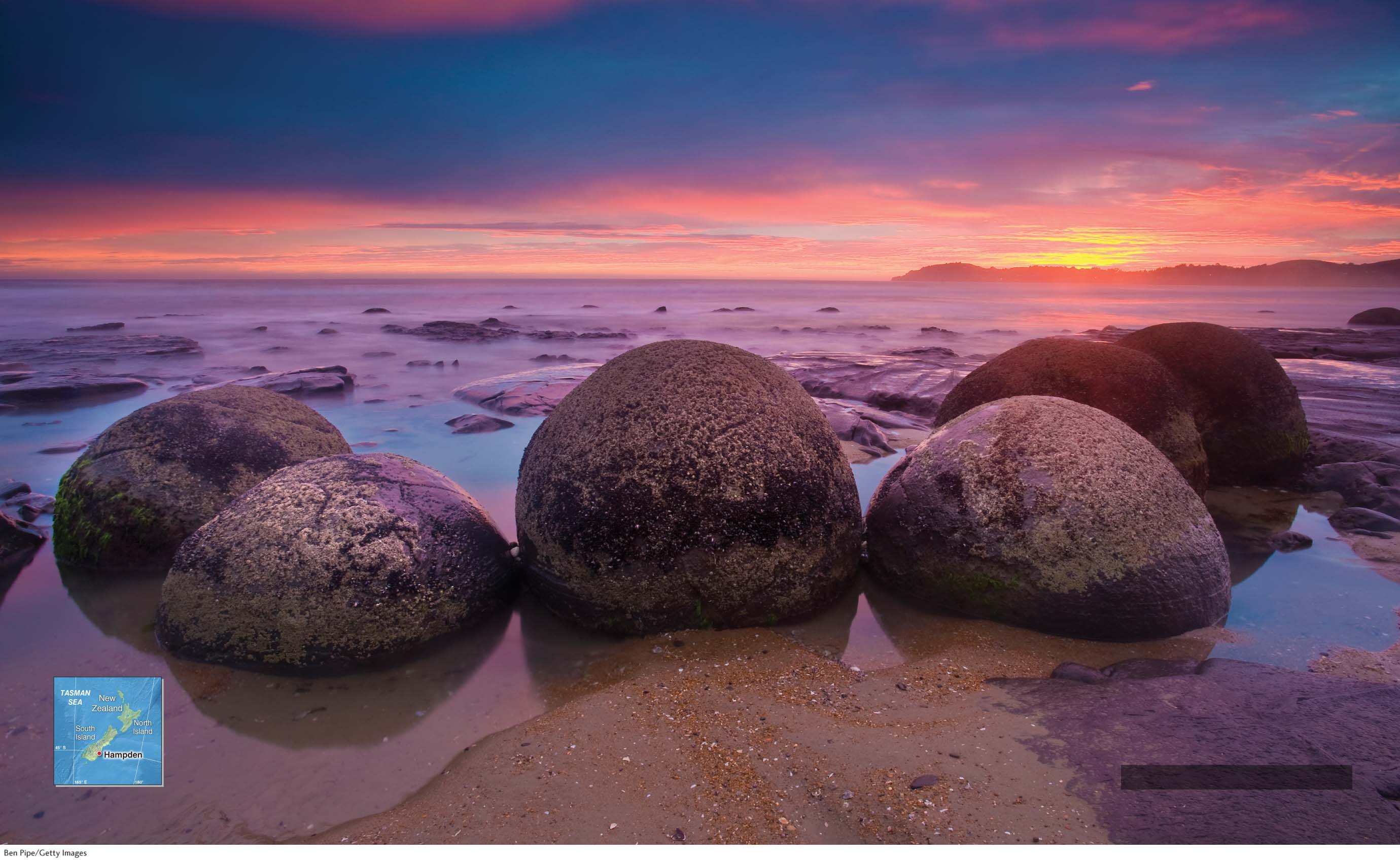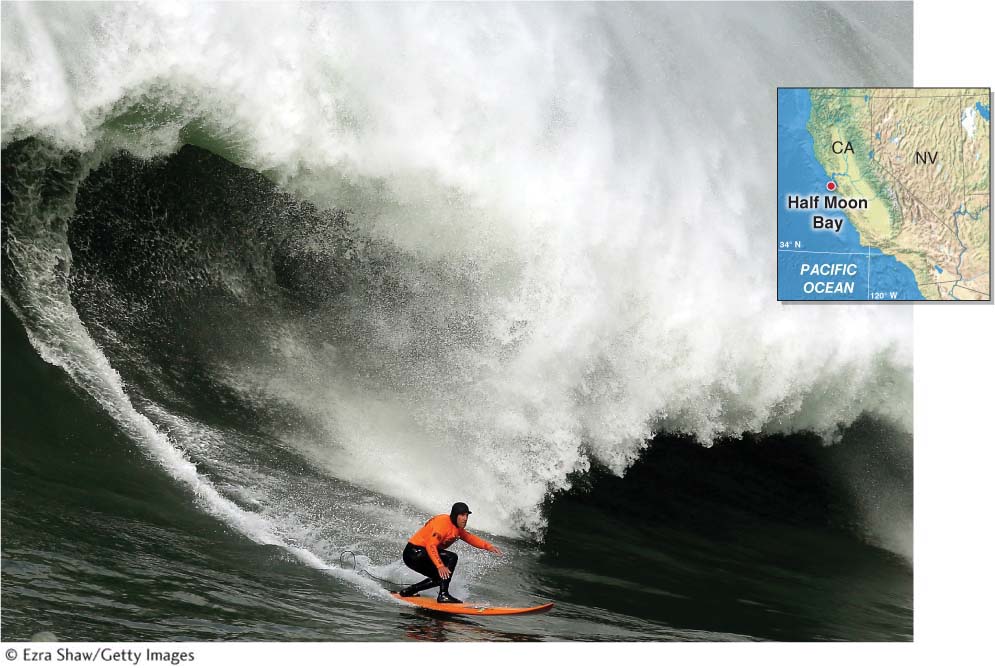THE WORK OF WAVES: Coastal Landforms
19

LIVING PHYSICAL GEOGRAPHY
What causes the tides?
What are rip currents and why are they deadly?
Why are some beaches black?
Why is the sand on many beaches artificial?
THE BIG PICTURE
Coastal beaches and rocky shores are shaped by wave energy. Human activities have contributed to the loss of sand from beaches through erosion.
LEARNING GOALS
After reading this chapter, you will be able to:
19.1
Discuss the role of tides and wave energy in coastal landform development.
19.2
Describe landforms on beaches and rocky coasts and explain how they form.
19.3
Assess and evaluate the practice of restoring eroded beaches by artificial replenishment of sand.
THE HUMAN SPHERE:
Mavericks
FOR MOST OF THE YEAR, the world’s professional-

The waves of the ocean possess a considerable amount of energy, and they never rest. This chapter explores the ways in which wave energy shapes the coast and the landforms that result from it. Because waves are generated by wind, and wind is generated by solar heating, the erosional energy of coastal waves is ultimately derived from the Sun.
We begin this chapter by exploring tides, waves, and coastal currents. We next examine sandy and rocky shores and the landforms associated with each. Finally, we examine the problem of maintaining sand at popular coastal beaches.